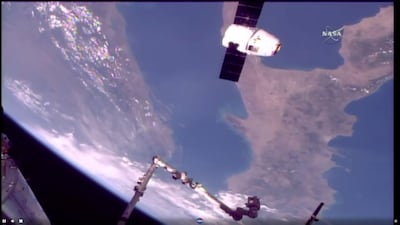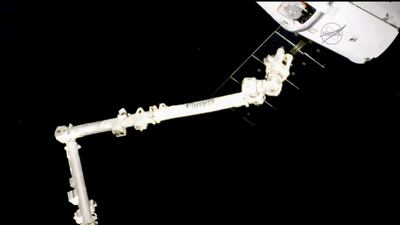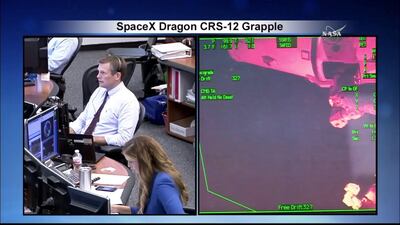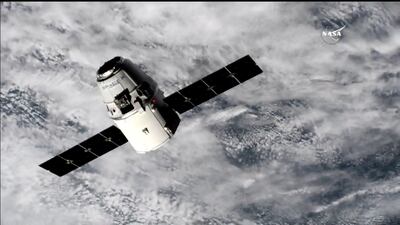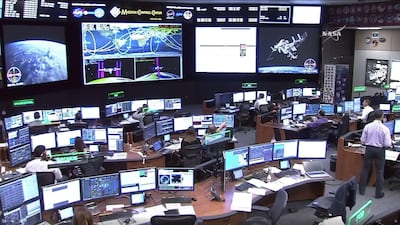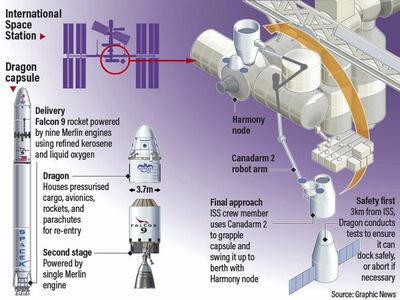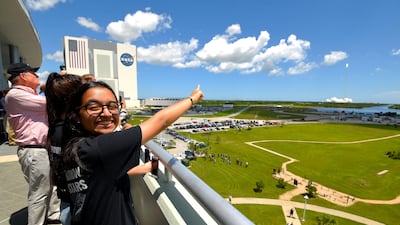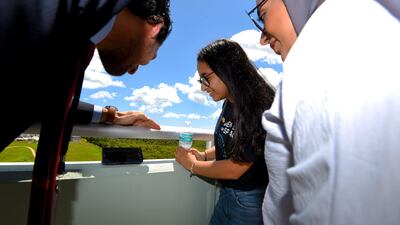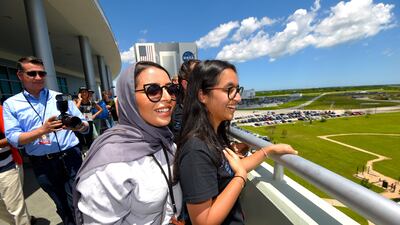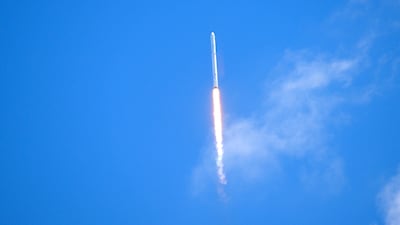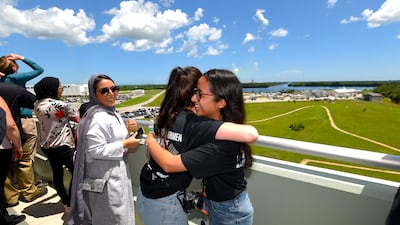"We caught a Dragon!" Nasa tweeted as Alia Al Mansoori's Genes in Space experiment arrived at the International Space Station Wednesday aboard a capsule captured by astronauts with a robotic arm.
Paolo Nespoli, from Italy, and Jack Fischer, from the United States, used controls for the Canadarm 2 to reach out and grapple the SpaceX Dragon capsule from within the Cupola workstation and attach it to the space station. The capture took place a little ahead of schedule, at 5.52am Central Time (2.52pm local time) somewhere over the Pacific Ocean north of New Zealand.
The Emirati teen's experiment, the winner of a competition sponsored by The National, the UAE Space Agency and Boeing, was among almost three tonnes of scientific research and hardware aboard SpaceX's 12th commercial resupply mission, called CRS-12. The experiments cover topics such as analysing cosmic rays, growing lung tissue and understanding Parkinson's disease, while hardware includes the most powerful computer ever in space, the Hewlett Packard Spaceborne Computer.
Communications with Mission Control in Houston were broadcast as part of the live feed on Nasa TV, as viewers watched the space station pass over South America, the Sahara, the Mediterranean, the Middle East and China within the space of an hour, illuminated first by the sun from an orbital sunrise and then from a sunset into nighttime.
"We are ready for Dragon capture," the Italian astronaut told Mission Control, before announcing "capture complete".
"Thanks, Paolo, nice work," said Danish astronaut Andreas Mogensen, the capsule controller, aka Capcom. "You guys have just won yourself some fresh food."
Capcom might have been referring to the real ice cream on board for the astronauts, packed in the dry ice for experiments.
Before signing off, the American astronaut commended the mission as "a testament to a burgeoning commerical industry" and " yet another shining example of international co-operation in the storied legacy of the International Space Station".
"The crew stands ready to rock this science like a boss," he said. "We've got a Dragon to unload."
_________________
Read more:
Dreams of Emirati teenager Alia Al Mansoori launched into space
Genes in Space winner in Florida to witness her idea take off
Young Emirati is reaching for the stars as she aims to become UAE's first astronaut
_________________
The capsule launched from Nasa's Kennedy Space Centre in Cape Canaveral, Florida on Monday, witnessed by Alia and her family, on a Falcon 9 rocket that detached then returned to Earth. "I literally can't believe that my experiment is now in space," the 15-year-old told The National's James Langton. "All the months of effort was worthwhile. The feeling I got when it launched was just so inspiring."
Dragon will remain docked at the Harmony module for a month, where it will be for a cargo swap before returning to Earth in a "splash-down" off the coast of Baja, California.
Once Alia's experiment is unloaded, one of two American astronauts are scheduled to conduct her experiment using samples she developed with help from Harvard University and carried out on a machine called a miniPCR, which can replicate genetic material and test it under a number of conditions.
The experiment has a number of applications, including researching diseases and seeing whether it is possible to test human genomes in space, something which has never been done before. If successful it will help humans better prepare for the radiation experienced in deep space flight to destinations like Mars, one of Alia’s ambitions. It will then return to Earth, where it will be evaluated by the Harvard team and the student at Al Mawakeb School in Dubai.
__________________
THE FACTS:
Who's aboard: Jack Fischer (United States), Commander Fyodor Yurchikhin (Russia), Peggy Whitson (United States), Paola Nespoli (Italy), Randy Bresnik (United States), Sergey Ryazanskiy (Russia)
Mission: Expedition 52 began in June and ends in September; SpaceX CRS-12 is the 12th of 20 missions to the space station under contract by Nasa
Size: Larger than a six-bedroom house, it's about the length of a football field and weighs almost a million pounds
Speed: Travels at five miles per second, it orbits Earth every 90 minutes
Power: An acre of solar panels supply 75 to 90 kilowatts of power; 52 computers control the systems
How to see it: The third brightest object in the sky, it looks like a fast-moving plane; you can check its position at https://spotthestation.nasa.gov (there's a chance to spot it at 7.54pm on Thursday from Abu Dhabi)
Next up: Two Russian cosmonauts will perform a space walk on Thursday to deploy several nanosatellites, collect samples and perform maintenance. You can watch on Nasa TV at 10am EDT (6pm local time) and on www.nasa.gov
Source: Nasa, SpaceX
